Tidal Exchange
newsletter of the elkhorn slough foundation
s P ring 2014


newsletter of the elkhorn slough foundation
s P ring 2014

Early last October, a team of experienced volunteers and staff carefully combed the sand dunes of Moss Landing State Beach. They were on a mission to gather seeds from a variety of native dune plants, including beach sagewort, sand verbena, and mock heather. This seed collection was the first step in the Moss Landing State Beach dune restoration project, a new effort in the collaboration between Elkhorn Slough Foundation and California State Parks to support Moss Landing State Beach, which was slated for closure in 2011 due to state budget shortfalls.

while enabling California State Parks to cut maintenance costs and keep the park open.
“Moss Landing State Beach is an important recreational resource for the local community,” says Foundation Executive Director Mark Silberstein. “It’s important to protect this amazing place for human enjoyment and exploration, as well as the for the health of wildlife and coastal habitat in the watershed.”
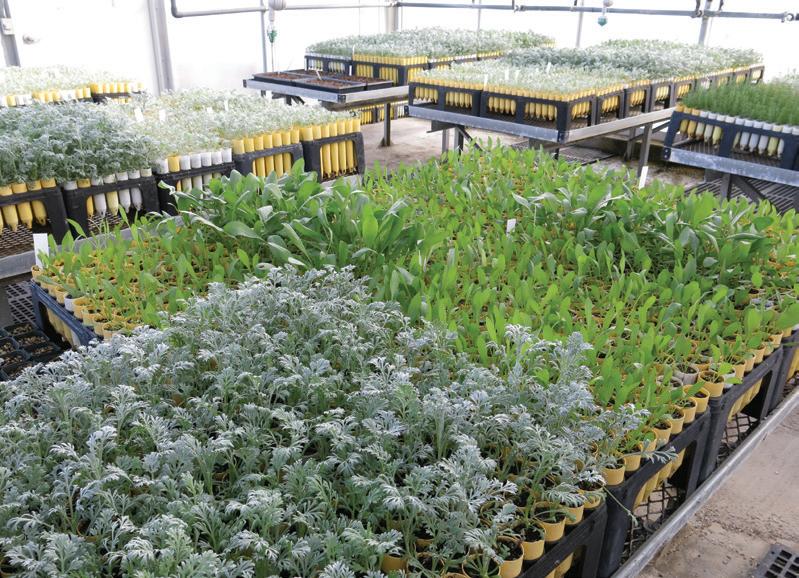
Moss Landing State Beach is where the slough meets the ocean. To protect the doorstep of our watershed, Elkhorn Slough Foundation reached out to State Parks to see how we could help—and a partnership was born. The Foundation and California State Parks are collaborating to reinvigorate the park and protect the adjacent slough,
Near the project site, California State Parks clears sand from the roadway almost weekly during windy seasons to maintain access and prevent unsafe conditions. The Moss Landing State Beach Dune Restoration project will help stabilize the dunes and prevent erosion, provide critical habitat for native plants and wildlife (including the endangered western snowy plover), improve the park for visitors, and reduce maintenance costs.
Elkhorn Slough Foundation
Judith Connor
President
Anne Olsen
Vice President
C. Michael Pinto
Treasurer
Steven Webster
Past President
Ed Boutonnet
Steve Dennis
Terry Eckhardt
Steve Green
Robert Hartmann
Kent Marshall
Anne Secker
Lydia Villarreal
Tom Williams
Mary Wright
Mark Silberstein
Executive Director
The mission of the Elkhorn Slough Foundation is to conserve and restore Elkhorn Slough and its watershed.
We see Elkhorn Slough and its watershed protected forever— a working landscape, where people, farming, industry, and nature thrive together. As one of California’s last great coastal wetlands, Elkhorn Slough will remain a wellspring of life and a source of inspiration for generations to come.
PO Box 267, Moss Landing California 95039
tel: (831) 728-5939
fax: (831) 728-7031 www.elkhornslough.org
tidal exchange
Nichols, Editor
com•mu•ni•ty n. 1) a group of people living in the same place or having a particular characteristic in common; 2) a feeling of fellowship with others, as a result of sharing common attitudes, interests, and goals; 3) [ecology] a group of interdependent organisms of different species that share a habitat.
Community. Whether the word describes an assemblage of plants and animals that inhabit an area or a group of people that share common interests and objectives, the achievements of the Elkhorn Slough Foundation are truly a community effort.
Elkhorn Slough Foundation protects and restores land throughout the watershed, from the beaches to the hilltops. Our work extends beyond the winding tidal channels and marshes that form the estuary, encompassing the rich diversity and interdependence of the watershed and its communities—human and wild.
Our restoration work at Moss Landing State Beach supports a range of unique ecological communities that rely on one another—from mudflats to coastal dunes, from pickleweed marshes to sandy beaches. Here, nearly a hundred volunteers from local organizations, businesses, and neighborhoods pitched in to help at community plantings, to restore dune habitat and revitalize Moss Landing State Beach.
On Foundation properties, such as Blohm and Brothers, volunteers from REI, Green Mountain Coffee Roasters, and McGraw-Hill have helped restore oak woodlands by planting native grasses, shrubs, and oak saplings.
Twice a year, friends and neighbors band together for the Coastal Cleanup to remove tons of trash from the Elkhorn Slough watershed.
Eagle Scout Eddie Mazariegos organized his troop to remove more than 2,200 feet of abandoned fences opening up a corridor for wildlife from wetlands to ridge top. And each year Girl Scouts and school groups spend the day helping the Stewardship team while learning about the environment.
A three-year Elkhorn Slough otter research project is a joint effort of the Elkhorn Slough Reserve, Monterey Bay Aquarium, USGS and others. And we launched the informational and educational Elkhorn Slough Otter Cam (elhornslough.org/ ottercam) in collaboration with Friends of the Sea Otter.
In the often quoted words of John Muir, “When we try to pick out anything by itself, we find it hitched to everything else in the Universe.” n
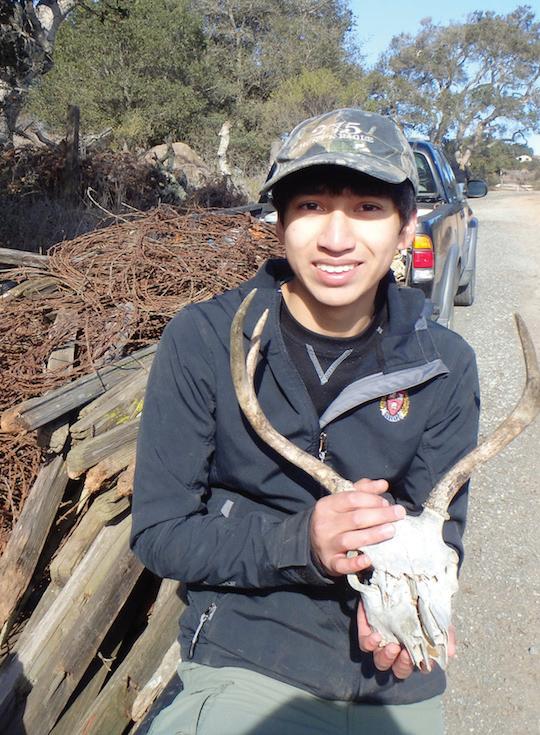

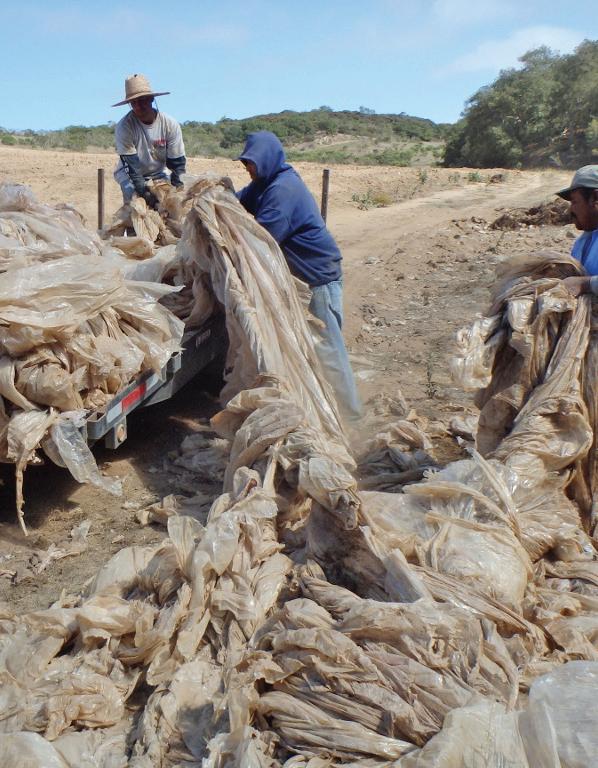

tons of abandoned agricultural plastic they unearthed; a volunteer plants native seedlings at
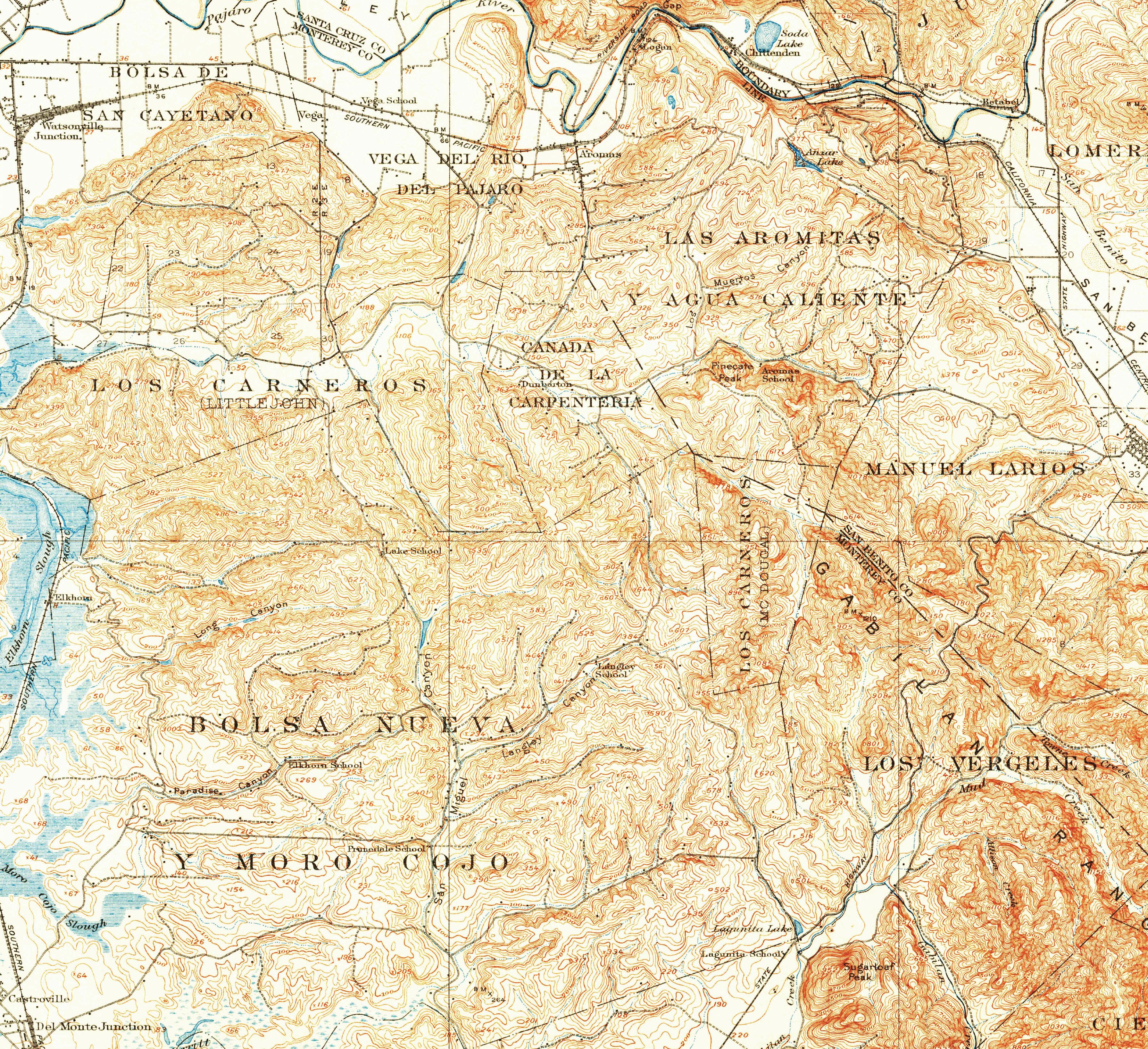
Historical ecology involves the analysis of written records, such as journals and maps, to learn how habitats were distributed and how ecological functions were performed in the past.
We are fortunate to have several reliable firsthand accounts from the 1700s and 1800s—including journals from the Portola Expedition and maps of Spanish land grants—that tell the story of the Elkhorn Slough watershed and describe the region’s geography, water, native plants and wildlife, and other natural resources. The records of landowners and early explorers paint a fascinating and informative picture of how the Elkhorn Slough watershed has changed through time.
We can interpret these accounts to gain insight into the forces that have shaped today’s ecological landscape, which
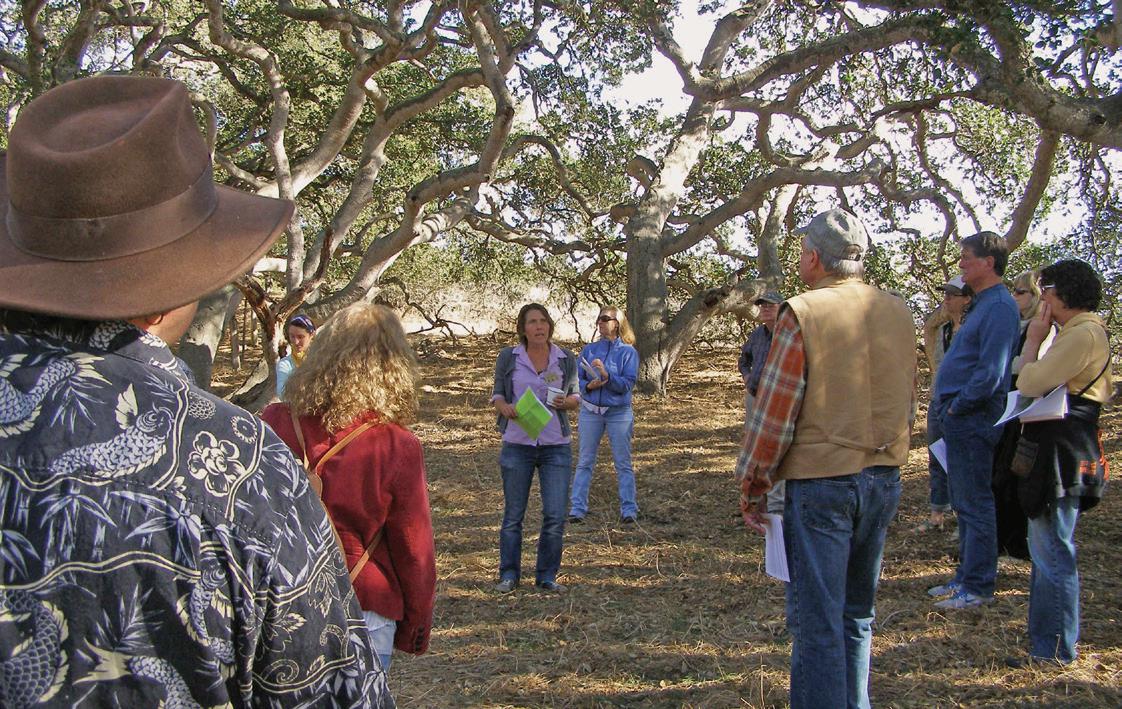
In January, Reserve stewards Andrea Woolfolk (not shown) and Bree Candiloro (at center of photo) presented “Digging into the Past,” about using the watershed’s historical ecology to guide land restoration.

Diseños—informal maps, like this one from the 1840s—give us clues about the ecological history of our watershed.
can help guide our stewardship and restoration decisions. We are able to discover patterns in how different habitat types were distributed historically; where water was found, and whether it was fresh, salt, or brackish; what plants and animals lived here, and where; and how humans used, or intended to use, the land and its resources.
The world around us has changed through the years, and we can’t “turn back the clock” to restore our lands to the exact conditions found at a particular point in time.
But we can draw on historical ecology to make informed decisions about how to restore native California habitats, plants, and wildlife that will thrive on our lands. Insights into the land’s past can even help you create a productive and beautiful native landscape in your own yard.
To learn more about historical ecology, visit elkhornslough.org/habitat-restoration/historicalecology-tools, where we have collected some amazing resources, including links to maps and references. n
We want to thank everyone who contributed to the Elkhorn Slough Foundation through Monterey County Gives! This is the third year we’ve been part of this program sponsored by the Monterey County Weekly, which matches a portion of every gift received. This year, Sea Mist Farms and Boutonnet Farms helped even more — they agreed to match, dollar-fordollar, all gifts up to $10,000. With the opportunity to make each contribution go further, individuals donated nearly $15,000 to support restoration work needed in a 10-acre Coast Live Oak woodland. All combined, more than $27,500 was raised to conserve and care for protected lands of Elkhorn Slough. We are very fortunate to live in such an amazing place with a generous community that appreciates natural beauty. Thank you! n
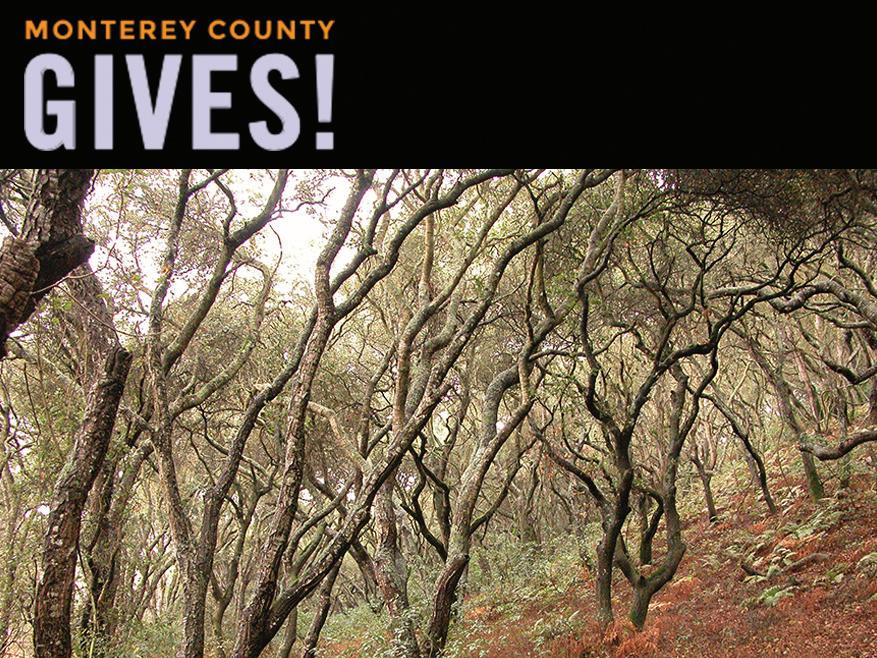


(Continued from front cover)
From the seeds gathered last fall, more than 10,000 plants were propagated and cultivated at the Elkhorn Slough Reserve’s state-of-the-art greenhouse. As the seedlings grew ready to transplant, State Parks reshaped the eroded dunes in preparation for planting using 400–700 cubic yards of windblown sand removed from the roadway. Remnants of buried fencing were uncovered and removed.
Elkhorn Slough, home to the largest concentration of Southern sea otters on the coast, has become a hub for researching the furry marine mammals. We have recently been involved in a number of projects related to sea otter conservation and research.
Last fall, Reserve researcher Brent Hughes published a groundbreaking study of how sea otters have promoted the recovery of healthy eelgrass beds in Elkhorn Slough by controlling crab populations. Brent is currently doing additional research on how sea otters affect the health of pickleweed marshes.
Reserve scientists are also working in conjunction with the United States Geological Survey, California Department of Fish & Wildlife, Monterey Bay Aquarium, and others to understand how sea otters use the estuary habitat of Elkhorn Slough. Researchers captured 20 sea otters, took medical readings and blood samples, and fitted the otters with radio transmitters and depth recorders. The three-year study will provide detailed data about otter movements and feeding behaviors in estuarine habitat. Researchers hope to use these findings to help sea otters expand their range.
The Foundation also promotes sea otter conservation through education. We helped install interpretive panels at Moss Landing State Beach to teach visitors about sea otters. And, of course, there's the Elkhorn Slough Otter Cam (story on page 6).
“Elkhorn Slough has become the spot for sea otter viewing, conservation, and research,” says Foundation Executive Director Mark Silberstein. “These otters are terrific ambassadors, bringing the wonders of the slough to a whole new audience.” n Southern sea otter with crab (top) photo by Jacqueline Deely.
To reduce wind erosion and allow the seedlings to become established, State Parks moved about three tons of kelp from nearby beaches that was spread over the bare sand of the dunes by volunteers. When there wasn’t enough kelp (yes, even tons were not enough), seedlings were
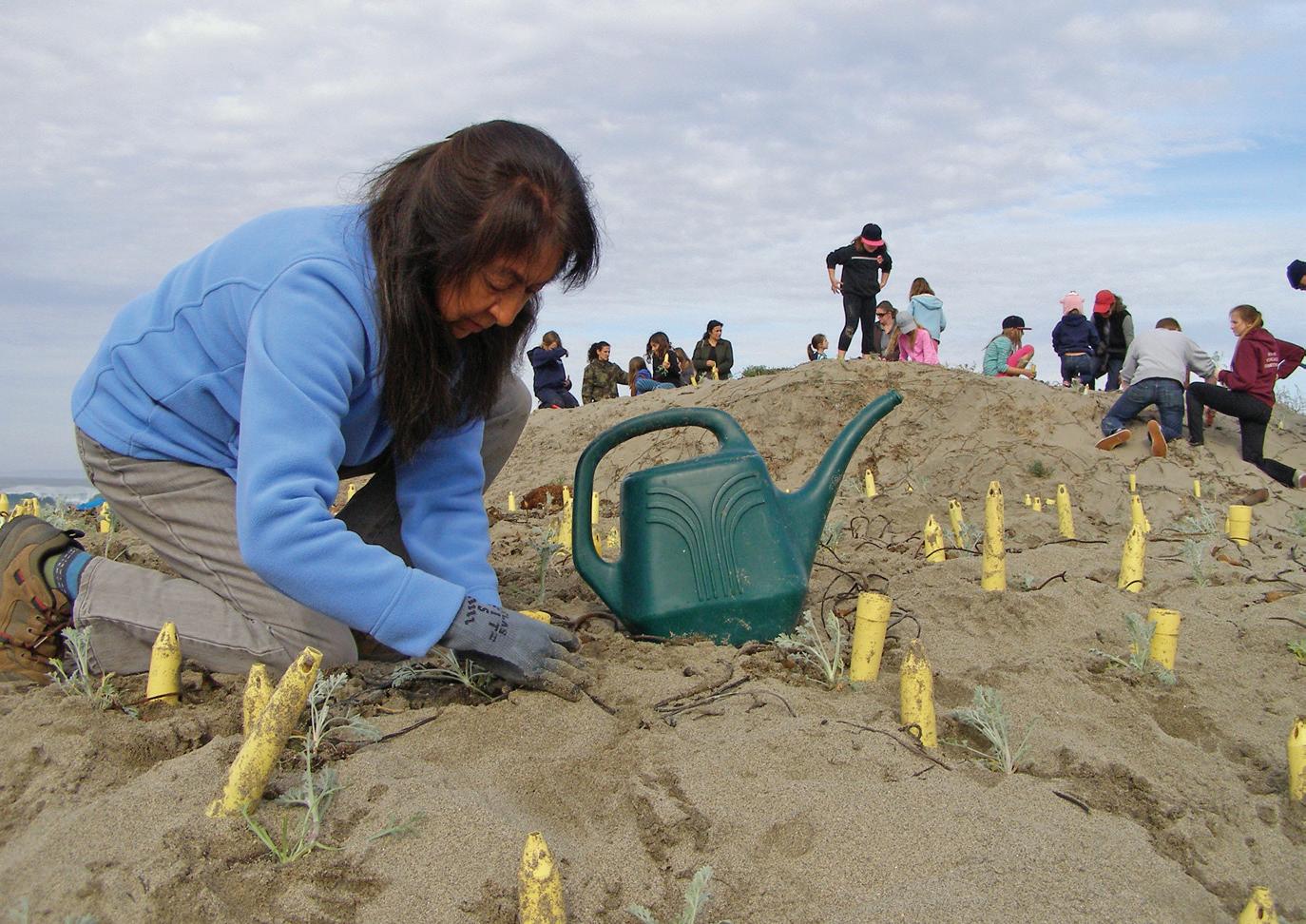
sheltered within straw plugs. The kelp and straw plugs not only help shield the plants and stabilize the dunes, they decompose naturally, releasing nutrients to the young plants as they take root.
This preliminary work—from collecting seed to preparing the site—culminated in a monumental planting project, in which we rallied volunteers from local schools, businesses, and the community at-large to help plant thousands of seedlings in the dunes. The response was overwhelming and, throughout the planting effort, more than a hundred supporters came out to help protect the dunes.

As with most of our restoration work, careful timing has been essential. Moss Landing State Beach is important
breeding habitat for the threatened western snowy plover, with portions of the dunes protected during critical nesting periods between March 1 and September 30.
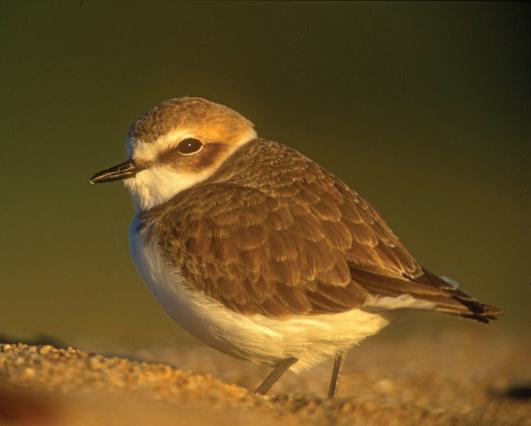
“One of the things that makes restoration so interesting is its seasonality and time-sensitivity. A task like seed collection, for example, spans just a few days but has to happen at just the right time for the overall restoration effort to be successful,” says Katie Pofahl, Foundation Outreach Coordinator. “With the help of our community, we’ve been able to get these plants in the ground in time for the snowy plovers to select nest sites, and hardy enough to survive for months without rain. These dunes could be an ideal spot for the plovers to raise chicks.”
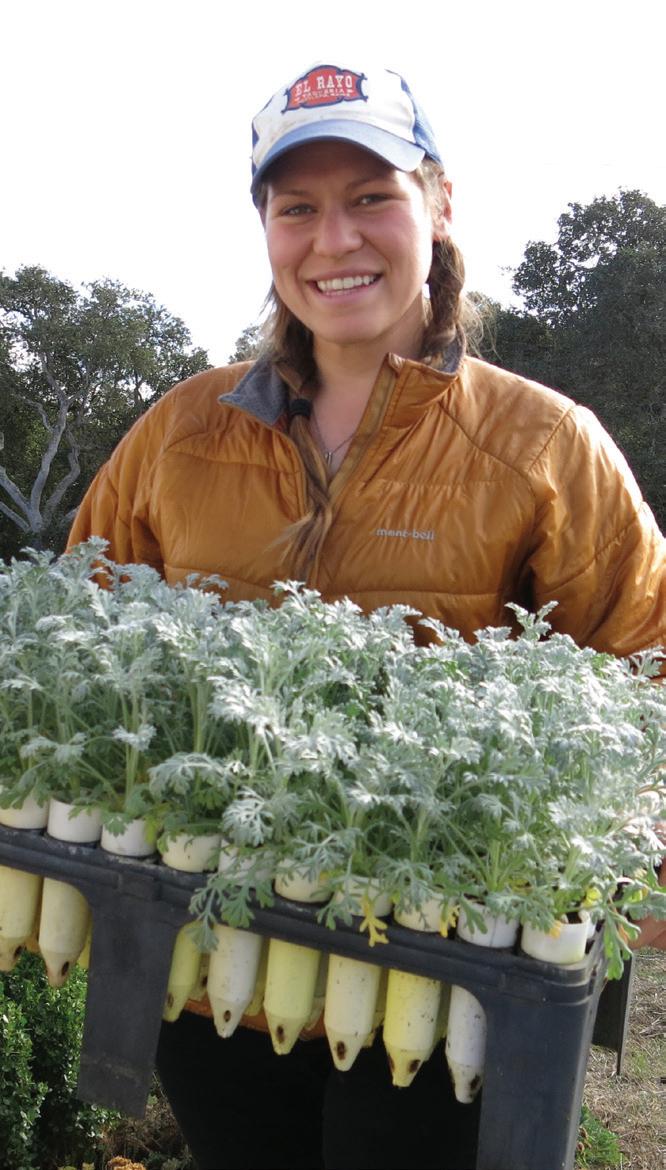
Stabilizing the dunes is just one aspect of this unique partnership. The Foundation and State Parks are working together on new interpretive signs and volunteer interpreters, as well as additional restoration work. There is much planned throughout this year—if you’d like to be involved, please contact Katie Pofahl at (831) 728-5939. n
If you’ve ever visited Elkhorn Slough, you’ve no doubt seen the landmark stacks of the Moss Landing power plant towering over the harbor at the mouth of the slough. Dynegy’s natural gas-burning power plant is the largest capacity power generator in California, capable of delivering 2,529 megawatts — enough to power more than 600,000 homes.
In addition to being a regional landmark, the power plant is a long-standing supporter of our vision to protect and restore the slough and its watershed forever — a working landscape, where people, farming, industry, and nature thrive together. Over the past five years, Dynegy has contributed more than $35,000 to support our land protection and stewardship efforts.
“As Mark Silberstein has said before, the partnership between ESF and Dynegy’s Moss Landing Power Plant is where the rubber meets the road regarding the shared interests between conservation and industry,” says Pete Ziegler, Managing Director of the Moss Landing Power Plant. “I’d like to think that we have set an example for others to follow. We are proud of the relationship that we’ve built with the ESF and look forward to continuing it well into the future.”
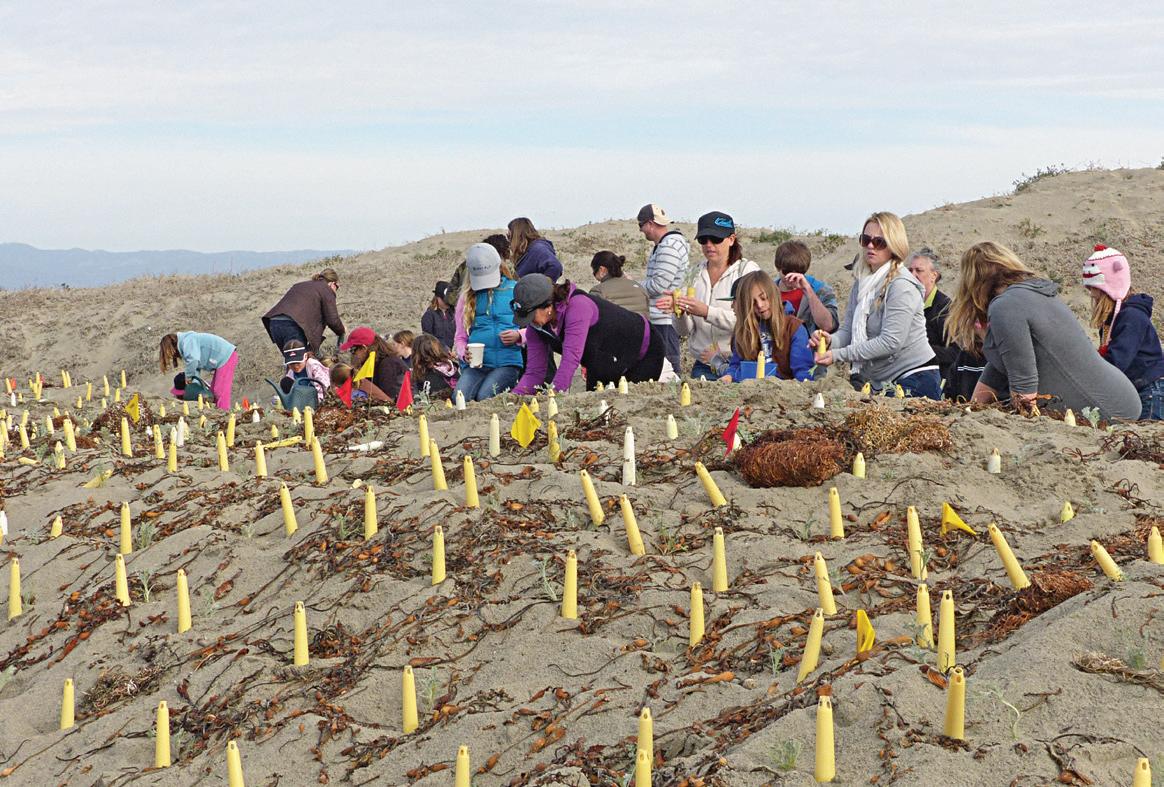

Additionally, the crew at Dynegy has donated their time to support the effort to restore the dunes at Moss Landing State Beach. Dynegy employees propagated seedlings at the Reserve and, when it came time to plant those little seedlings, teams of employees and their families joined the events at the beach.
Dynegy is giving new power to the “good neighbor policy” and it’s benefiting the Elkhorn Slough. n
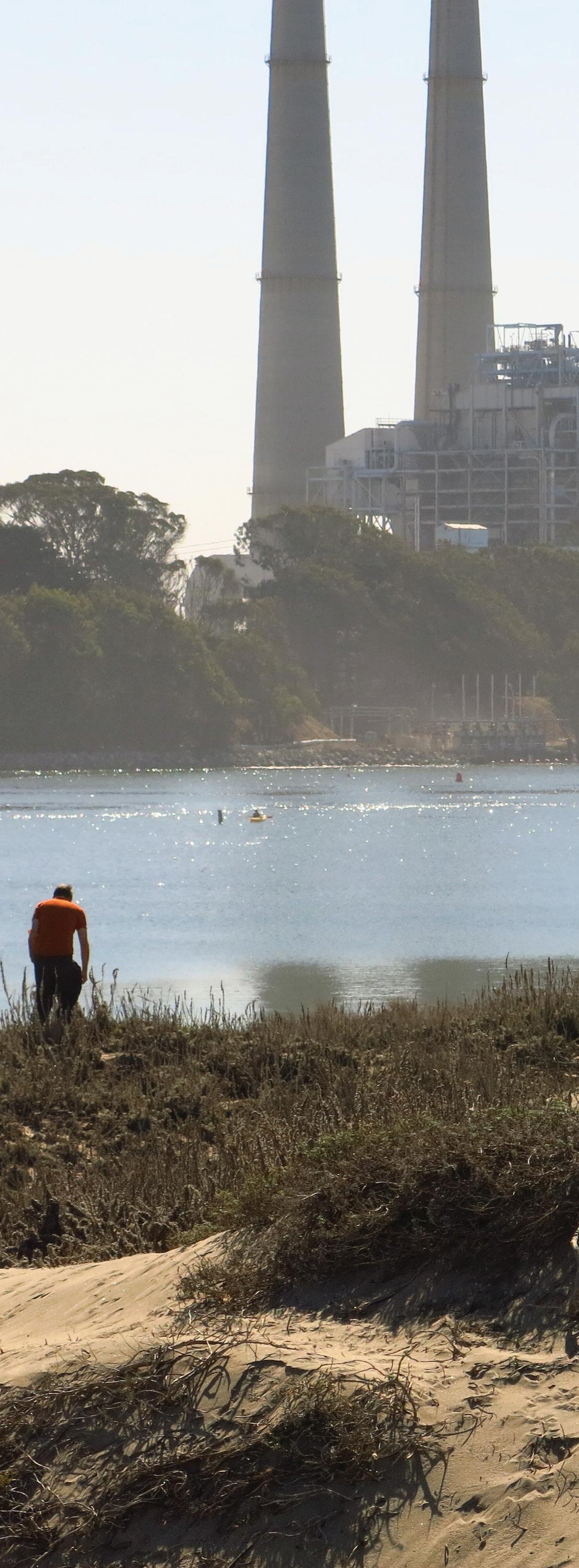
It is the only camera that views wild Southern sea otters as they romp, rest, feed, groom, and nurture their pups in the calm channels of a pickleweed marsh. It is a research tool, educational opportunity, and it's entertaining. It's the Elkhorn Slough Otter Cam, which launched last fall and can be viewed on our website at elkhornslough.org/ottercam.
“With the camera we can watch otters not only swimming but interacting in extraordinary ways. For example, we regularly see them resting on the pickleweed, a behavior not witnessed in decades,” says Reserve Manager Dave Feliz. “It's changing how we think about sea otters and how they use estuaries.”
The Elkhorn Slough Otter Cam has been years in development due to its remote location. Stationed on the edge of the marsh, the camera looks across the pickleweed and tidal channels of the slough. These channels are frequented largely by female otters that may be using the area as a nursery, as mothers with pups are frequently observed.
“The Otter Cam opens a unique window on the lives Southern sea otters. There are times we are seeing 25 or more otters in the protected channels of the slough’s marsh,” says Mark Silberstein, ESF Executive Director,
With more than 340 different bird species and a range of mammals from Southern sea otters to mountain lions, the Elkhorn Slough area is a haven for wildlife. Finding a way to depict this diversity can prove challenging.
Local artist Laura Vollset has offered her time and talent to create an illustrated look at key species—from birds to plants to mammals. Once completed, the poster will be a useful teaching tool for the nearly 7,000 students that visit the Elkhorn Slough Reserve annually. Accompanying the beautifully illustrated composite of the slough setting, there will be a key identifying the species. In other words: a learning opportunity in art.
You can learn more about Laura Vollset and view a fascinating time-lapsed video of her work-in-progress online at elkhornslough.org/funandgames/poster.
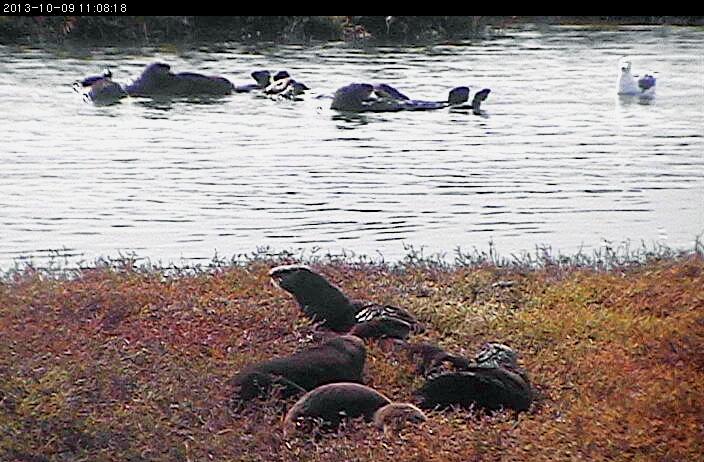
who has been studying and protecting the slough for more than three decades. “This indicates there are more otters residing in the slough than originally thought, and we've witnessed some unique behaviors.”
Although the stars of the Otter Cam are the female otters that tend to reside in the marsh channels, the camera also catches a wider variety of slough wildlife — from fishing herons to the occasional harbor seal — and stunning views of the slough itself. The camera offers a view of Elkhorn Slough that changes as throughout the day and seasons. It is an innovation that will help inspire conservation and protection of otters and their habitat. n

A sneak preview of the work-in-progress by illustrator Laura Vollset.
The Elkhorn Slough poster has been accepted into the 25th Annual Art of Nature exhibit at the Santa Cruz Museum of Natural History, April 4 – June 30, 2014. And if you have artistic aspirations, Laura will lead a sketching workshop on Foundation lands on May 4. To register or learn more, visit www.elkhornslough.org/calendar. n

kim hayes, esf stewardship director
The Elkhorn Slough Foundation conserves nearly 4,000 acres of diverse habitats. Our properties include freshwater and tidal wetlands, grasslands, and forests, as well as organic farms and ranch lands. With the support of our members and volunteers, we continually steward this land. But what exactly does that involve?
Over the years, the Foundation has acquired the “best of the best and the worst of the worst” lands in the watershed. For the “best” (that is, undeveloped natural properties) we work to ensure these lands retain their natural beauty — protecting stands of intact native habitats, removing invasive weeds and, to the extent possible, reducing negative impacts from past human activity. Then there are the other properties we obtain, which are degraded from years of neglect or poor management. It is these so-called “worst” lands that we spend most of our time cleaning up and restoring.
When we acquire a property that has been poorly managed, our first step is to create a plan for its rehabilitation. Walking the property reveals some immediate needs: erosional scars, such as gullies; trash (often agricultural materials) and infestations of non-native invasive plants; safety issues, such as old, overgrown fencing or unsafe buildings; and roads and trails choked by vegetation. As we take care of these urgent issues, we begin developing the restoration plan for the property.
This planning means looking at what is best for the property’s plants and animals, and how the property fits into the overall conservation of the watershed.
Restoration and stewardship requires upfront research. We look at historical and current maps and images to learn about land use and vegetation conditions. We seek clues on wildlife corridors and ecological changes from the past to current conditions. In general, we putting together pieces of the puzzle to see how the land once looked. Then we connect that puzzle to the other conserved lands creating the big picture of how the Elkhorn Slough area looked generations ago and what it can become again. We use this to guide our planning, to help return the land to a vibrant, healthy place — and then the physical work begins.
During the restoration process, which can take years, we fill gullies and restore land to stable contours; remove invasive plants; plant native grasses, trees and shrubs; open wildlife corridors by removing degraded fences (allowing animals to travel freely from wetlands to the ridge line); and address hosts of challenges along the way. And because we are committed to protect these lands forever, we continue our long-term stewardship even after the land is restored.
Your generosity through your membership and your volunteer time means each of you are also stewards of the Elkhorn Slough. n
Elkhorn Slough Foundation
P.O. Box 267 Moss Landing, CA 95039

The Elkhorn Slough Reserve is open Wednesday through Sunday, 9 am to 5 pm. Join us for docent-led tours every Saturday and Sunday at �0 am and � pm .
SAVE THE DATES: Join us for our upcoming events. For more information, call 83�.728.5939 or visit www.elkhornslough.org.
• Saturday, April �2: Spring Birding Walk
• Saturday, April �9: Earth Day Cleanup
• Sunday, May 4: Sketching with Laura Vollset
• Friday, May 30: New Member Sunset Stroll
• Saturday, June 7: Kayaking the Slough
Please watch our website and follow us on Facebook for updates on upcoming Foundation events.

